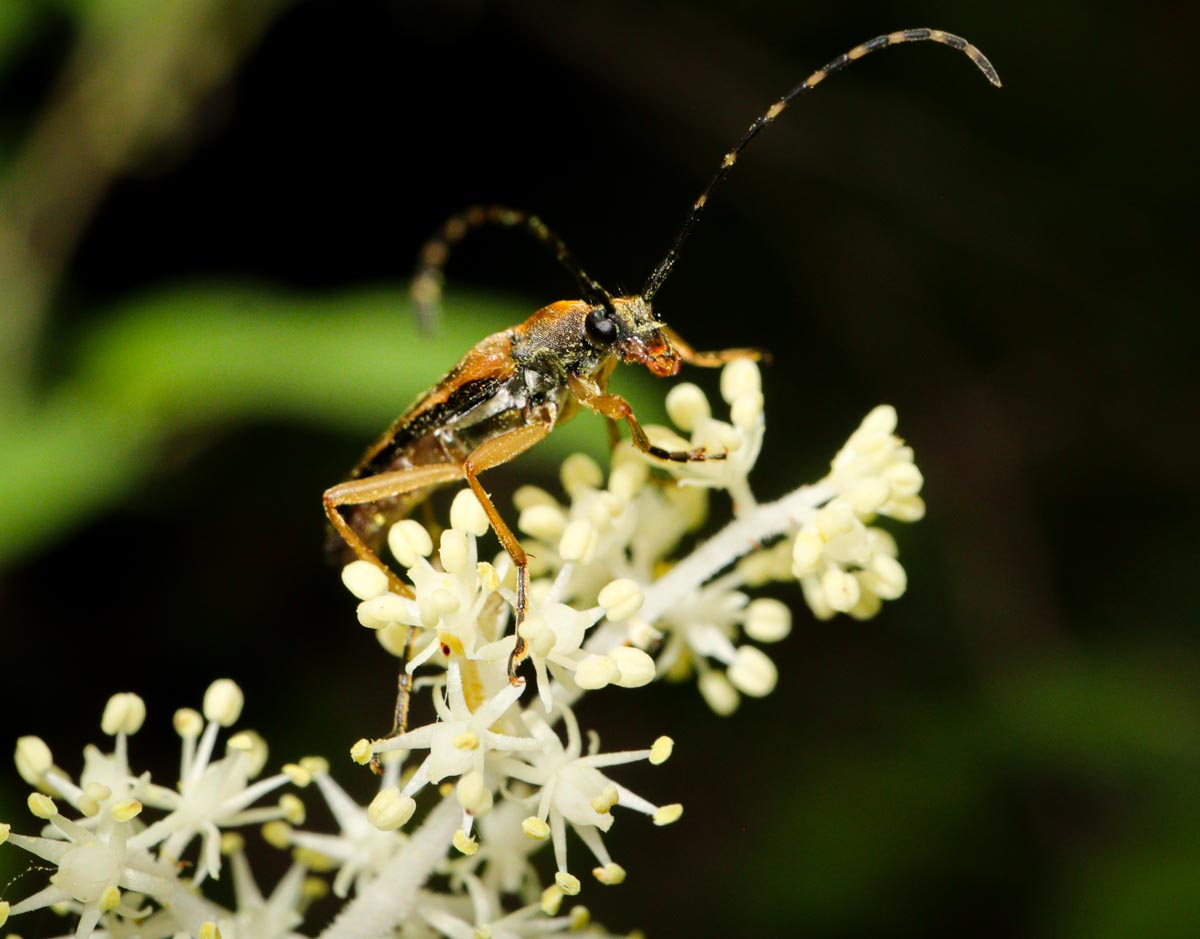Last week I mentioned my fondness for true Solomon’s seal. My dad’s early explanation of the names for the true and false Solomon’s seal, suggesting the true was a better plant than the false, imprinted a prejudice that still lingers. This week I worked hard to overcome my bias as the false Solomon’s seal started flowering.
The flower cluster is a long stalk ending with a raceme of up to 80 small flowers clustered above the leaves. They attract many pollinators, including bees, flies, and an assortment of beetles. Most times when I have walked by the flowers, I see at least one or two visitors. One of the most common is the flower longhorn beetle, named for their long antennae.
The Asian longhorned beetles are decimating American hardwood forests, creating a negative stereotype for their relatives. Unlike their invasive cousins these native flower longhorn beetles are kept in check by natural predators and provide important functions. As adults they are pollinators, and as larvae they feed on sick and dying trees, helping to maintain a forest of healthy trees.
When people develop pollinator gardens, they are often focused on attracting conspicuous and gaudy bees and butterflies, which have evolved complex relationships with flowers. But in sheer numbers, there are more than 400,000 described beetles, representing almost a quarter of all known animal species. Many of them are major pollinators, and the fossil record shows beetles are the first insects to pollinate plants, beginning over 100 million years ago. They have been important in shaping the evolution of flowering plants.
Looking beyond my childhood preconceptions, I can see these false flowers have a true purpose. They provide sustenance in this transition time, when spring ephemerals have come and gone, and the field flowers of summer are not yet in bloom. They continue an ancient history of flowers shaping and being shaped by beetles. So this week, I will celebrate a false plant and an underappreciated insect for being so important to each other and the forest.
